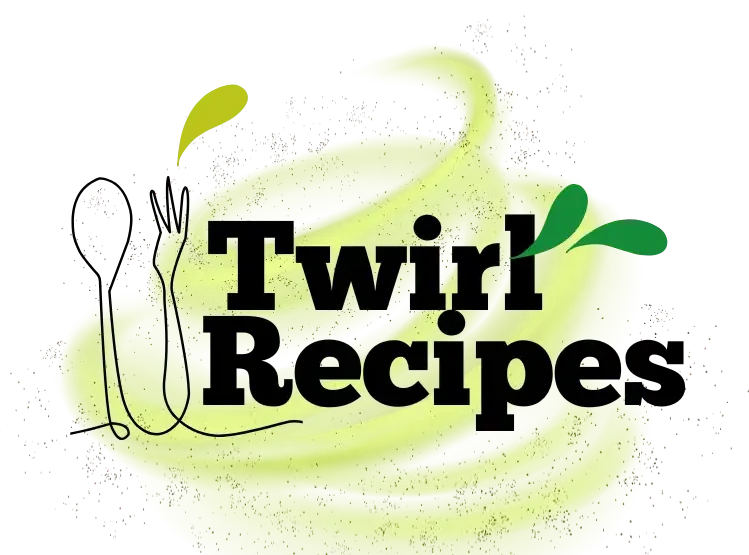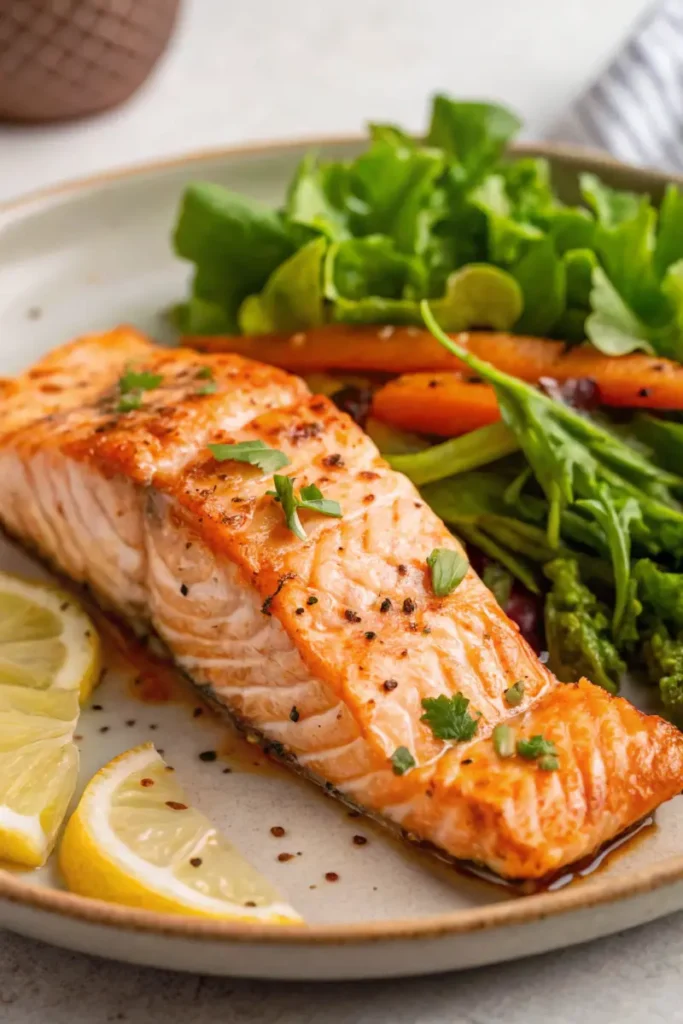Frozen salmon in air fryer is one of the easiest and most reliable ways to prepare a flavorful, juicy salmon dinner. This method is quick, hassle-free, and perfect for both beginners and seasoned cooks. Not only does it save time, but it also delivers consistently delicious results. Let’s explore why cooking frozen salmon in an air fryer is your next go-to technique for a healthy and satisfying meal.
JUMP TO
Why You’ll Love Cooking Frozen Salmon in an Air Fryer
Cooking frozen salmon in an air fryer is like hitting the jackpot of convenience and taste. Here’s why:
Faster, Fresher, and Fuss-Free
Who doesn’t love a meal that’s ready in no time? With the air fryer, you can go from frozen to fabulous in under 20 minutes. No need to defrost! It’s a lifesaver for those nights when you’re running low on time (or patience).
Healthy, Tasty, and Oh-So-Simple
Salmon is loaded with Omega-3 fatty acids, which are fantastic for your heart and brain. Plus, cooking it in an air fryer means you’ll use less oil—keeping the dish light yet flavorful. It’s perfect for anyone looking for a guilt-free, nutrient-packed dinner.
Mess? What Mess?
Say goodbye to oily splatters and complicated cleanups! Air fryers are neat, compact, and ridiculously easy to clean, which means less time scrubbing and more time enjoying your food.
With all these perks, it’s no surprise that air-fried salmon has become a favorite for families, foodies, and busy bees alike. Ready to learn how it’s done? Let’s move on to the details!
Understanding Air Fryers for Frozen Salmon
An air fryer is like your kitchen’s MVP when it comes to cooking salmon—or anything, really! If you’re new to the world of air frying, don’t worry—I’ve got you covered. Here’s why air fryers are a game-changer for cooking frozen fish and how to pick the right one for your needs.
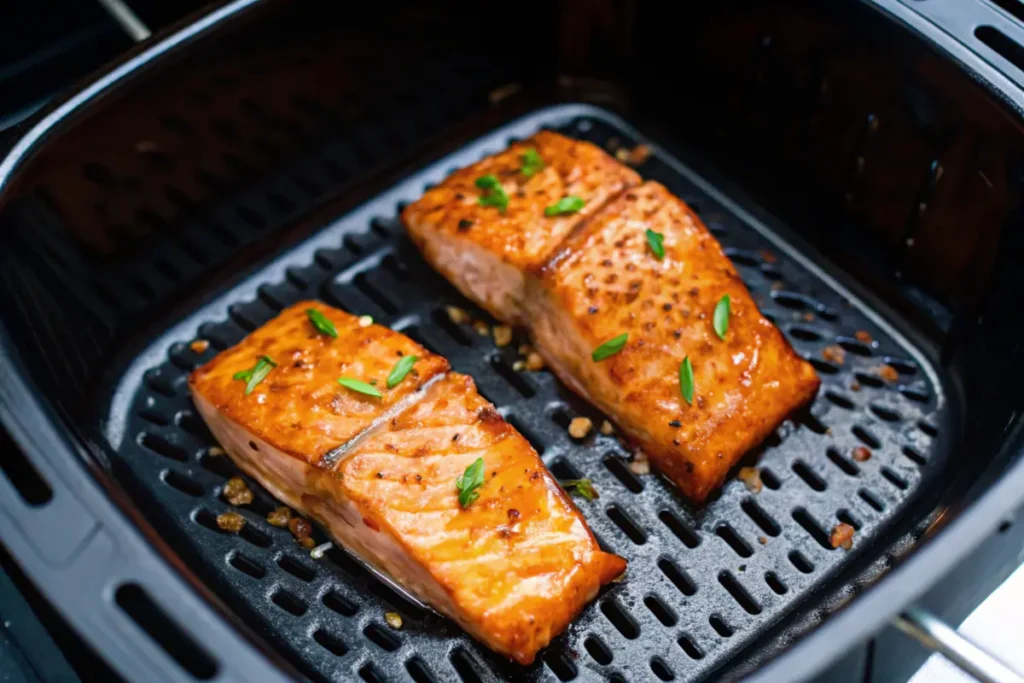
What Makes Air Fryers Great for Frozen Fish
Air fryers are more than just a trendy gadget—they’re a genius way to whip up delicious meals with minimal effort. The magic lies in the way they circulate hot air evenly, giving your food a crispy, golden exterior without drowning it in oil. For frozen salmon, this means you get perfectly cooked fish that’s tender on the inside and lightly crisped on the outside.
Unlike traditional ovens, air fryers preheat in just a few minutes, saving you tons of time. And since they’re compact, they don’t heat up your kitchen—perfect for those warm summer nights when turning on the oven feels like a chore.
Key Features to Look For in an Air Fryer
Not all air fryers are created equal, so here are a few must-haves if you’re planning to cook salmon regularly:
- Capacity: Look for a basket that’s large enough to fit your fillets without overcrowding. A 3.5-quart air fryer works well for individuals or couples, while larger models (5+ quarts) are better for families.
- Temperature Control: Precision is key! An air fryer with adjustable temperature settings allows you to cook salmon perfectly every time. Aim for a model that goes up to 400°F.
- Non-Stick Basket: Cleaning up is a breeze with a non-stick surface. Bonus points if the basket is dishwasher-safe!
- Pre-Set Functions: Some air fryers come with specific settings for fish, which can make your cooking experience even easier.
Air fryers aren’t just a trendy kitchen gadget—they’re a powerhouse for creating quick, healthy, and delicious meals. Once you try cooking frozen salmon in one, you’ll wonder how you ever lived without it!
What You’ll Need to Cook Frozen Salmon in Air Fryer
Before you start cooking, let’s make sure you’ve got everything you need to create a mouthwatering salmon dish. Don’t worry—this isn’t one of those recipes that require a mile-long list of ingredients. Simple, fresh, and easy is the name of the game here!
Ingredients
Here’s what you’ll need to make your frozen salmon in an air fryer truly shine:
- Frozen Salmon Fillets: Choose individually vacuum-sealed fillets for best results. Wild-caught salmon is rich in flavor, while farmed salmon has a buttery texture—both work wonderfully.
- Olive Oil or Cooking Spray: Helps keep the salmon moist and gives it a nice golden finish.
- Salt and Pepper: The basics that bring out the natural flavor of salmon.
- Garlic Powder: Adds a subtle, savory kick.
- Lemon Zest: A touch of brightness that pairs beautifully with salmon.
- Optional Add-Ons:
- Paprika for a smoky touch.
- Fresh herbs like dill, parsley, or cilantro for garnish.
- Honey or maple syrup for a hint of sweetness.
Equipment
Having the right tools makes cooking easier and ensures the best results:
- Air Fryer: Any model that reaches 400°F will work. Look for one with a spacious basket for evenly cooked salmon.
- Meat Thermometer: Ensures your salmon is cooked to perfection (145°F internal temperature).
- Tongs or a Spatula: For flipping the salmon gently without breaking it.
- Parchment Paper or Silicone Liners (Optional): To prevent sticking, especially if your air fryer basket isn’t non-stick.
With these simple ingredients and tools, you’re all set to whip up an impressive and healthy dish in no time.
How to Cook Frozen Salmon in Air Fryer
Now it’s time for the main event—cooking your frozen salmon in Air Fryer! This process is ridiculously easy, and the results are so good you’ll want to make it on repeat. Follow these step-by-step instructions for perfectly cooked salmon every time.
Step-by-Step Instructions
- Preheat the Air Fryer
- Set your air fryer to 400°F (200°C) and let it preheat for 3-5 minutes. Preheating ensures even cooking and a crispy exterior.
- Prepare the Frozen Salmon
- Take the frozen fillets out of their packaging and give them a quick rinse to remove any ice crystals.
- Pat them dry with a paper towel. This helps the seasoning stick better.
- Season the Salmon
- Brush the fillets lightly with olive oil or use cooking spray for even coverage.
- Sprinkle salt, pepper, garlic powder, and a bit of lemon zest on both sides. Don’t skimp—this is where the flavor magic happens!
- Cook the Salmon
- Place the fillets in a single layer in the air fryer basket, leaving space between each piece.
- Cook for 10 minutes at 400°F, flipping halfway through. If the fillets are thick, add an extra 2–3 minutes.
- Check for Doneness
- Use a meat thermometer to check the internal temperature. The USDA recommends salmon be cooked to 145°F at its thickest part.
- If you don’t have a thermometer, look for opaque, flaky flesh when you gently press the fillet with a fork.
Cooking Times for Different Thicknesses
- Thin Fillets (½ inch or less): 8-10 minutes.
- Medium Fillets (¾ to 1 inch): 10-12 minutes.
- Thick Fillets (1 inch+): 12-15 minutes.
Tips for Ensuring Perfect Results
- Don’t Overcrowd the Basket: Too many fillets at once can result in uneven cooking. Cook in batches if needed.
- Use Parchment Paper or Liners: If you’re worried about sticking, place a sheet of parchment paper (with holes for airflow) under the salmon.
- Experiment with Seasonings: Don’t hesitate to try different spices like paprika, Cajun seasoning, or even a teriyaki glaze for variety.
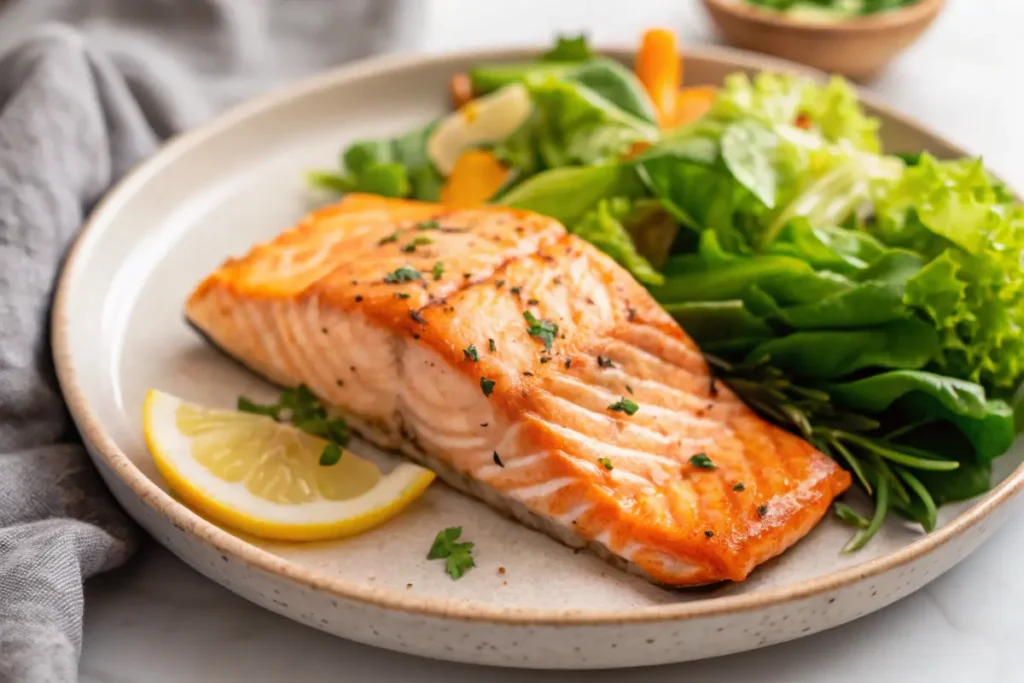
And that’s it! With these steps, you’ll have beautifully cooked salmon with a crisp exterior and tender, juicy interior.
Tips and Tricks for Best Results
Want to take your air fryer salmon game to the next level? These tips and tricks will ensure your dish comes out perfect every single time. From preventing dryness to enhancing flavors, here’s everything you need to know.
How to Prevent Dryness
- Add a Touch of Oil or Butter: While the air fryer uses hot air to cook, a little bit of olive oil or a small pat of butter goes a long way in keeping your salmon moist and flavorful.
- Don’t Overcook: The key to tender salmon is cooking it just right. Use a meat thermometer to pull it out as soon as it hits 145°F.
- Season Generously: A well-seasoned piece of salmon is not only flavorful but also retains moisture better during cooking.
How to Add Flavor
- Marinades: If you’ve got a few extra minutes, marinate the salmon before air frying. Lemon juice, garlic, soy sauce, and a touch of honey make a fantastic combo.
- Dry Rubs: For a quick flavor boost, sprinkle your fillets with a mix of smoked paprika, garlic powder, and dried herbs like thyme or oregano.
- Citrus Garnish: Add fresh lemon or lime slices on top before cooking. The citrus infuses the salmon with a subtle, zesty flavor.
Adjusting for Different Air Fryer Models
- Power Differences: Not all air fryers cook the same. If your model runs hotter or cooler, adjust the cooking time accordingly.
- Size and Shape of the Basket: If your air fryer has a smaller basket, you may need to cook in batches to avoid overcrowding.
- Pre-Set Programs: Some air fryers come with a fish or seafood setting. These are handy but double-check the internal temperature to ensure perfect doneness.
Bonus Tip: Make Cleanup a Breeze
- Line the Basket: Use parchment paper or silicone liners with holes to prevent sticking and make cleanup effortless.
- Clean Immediately: Salmon can leave a lingering smell if not cleaned promptly. Wash the basket and tray right after use for a fresh start next time.
With these tips in your arsenal, you’ll be whipping up flawless air fryer salmon every time. Ready to complete the meal? Let’s explore the perfect side dishes to pair with your delicious salmon.
Side Dishes to Pair with Air-Fried Salmon
Air-fried salmon is a versatile dish that pairs beautifully with a variety of sides. Whether you’re in the mood for something light and healthy or hearty and satisfying, these side dishes will elevate your meal to the next level.
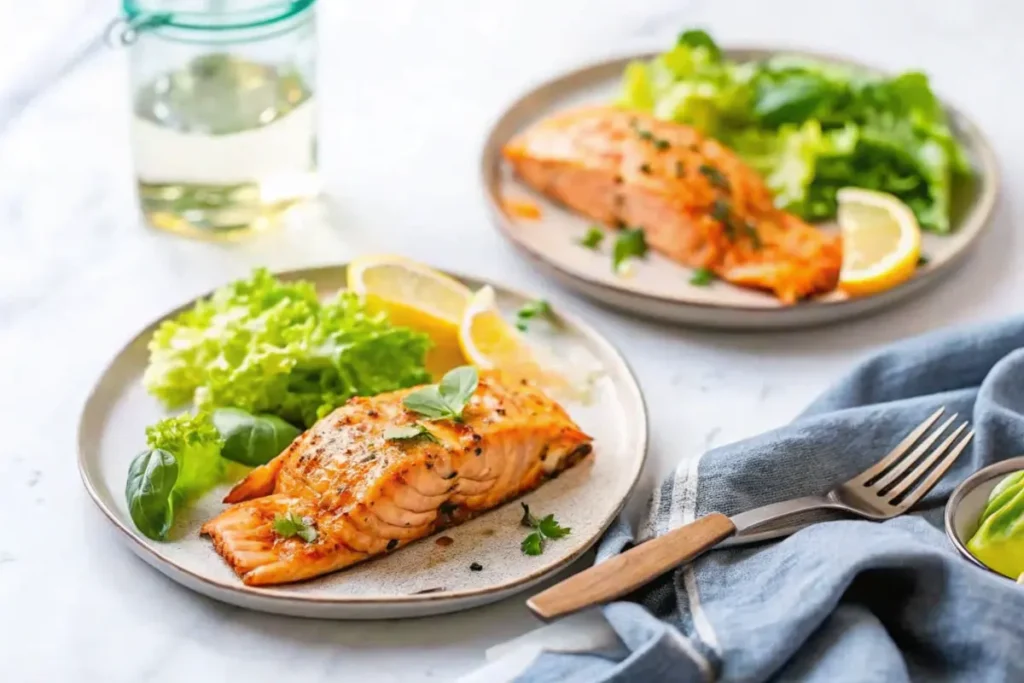
Quick and Healthy Sides
- Steamed Vegetables:
Broccoli, green beans, or asparagus are fantastic choices. Drizzle with olive oil and a pinch of sea salt for simple, flavorful veggies. Bonus tip: Steam them while your salmon cooks to save time. - Fresh Salad:
A crisp salad with mixed greens, cucumbers, cherry tomatoes, and a lemon vinaigrette complements the salmon’s rich flavor. Add a sprinkle of feta cheese or toasted almonds for extra flair. - Quinoa or Brown Rice:
These whole grains are light yet filling. Cook them in vegetable broth for added flavor, and toss in some chopped parsley or dill to tie the flavors together.
Hearty and Comforting Options
- Garlic Mashed Potatoes:
Creamy mashed potatoes with a hint of garlic are a perfect match for salmon’s rich texture. Try substituting half of the potatoes with cauliflower for a lighter twist. - Roasted Sweet Potatoes:
Sweet and savory, these are a fantastic side to balance the salmon. Season with cinnamon and paprika for a warm, smoky flavor. - Pasta Primavera:
A simple pasta dish with a medley of sautéed vegetables and a light olive oil or lemon sauce makes for a comforting and colorful side.
Complementary Sauces
Don’t forget the finishing touch! A good sauce can take your air-fried salmon from great to spectacular:
- Dill Yogurt Sauce:
Combine plain Greek yogurt with chopped dill, garlic, and lemon juice for a creamy, tangy accompaniment. - Honey Mustard Glaze:
Mix equal parts Dijon mustard and honey for a sweet, zesty drizzle. - Garlic Parmesan Sauce:
Whisk together melted butter, minced garlic, grated Parmesan cheese, and a splash of cream for a rich, savory sauce that perfectly complements the crispy texture of the salmon. - Avocado Crema:
Blend ripe avocado with lime juice, cilantro, and a pinch of salt for a smooth, rich sauce that pairs beautifully with salmon.
The beauty of these sides is their flexibility—mix and match based on your preferences and what you’ve got on hand. They’re guaranteed to make your air-fried salmon meal a hit!
Freezing and Reheating Leftover Salmon
One of the best things about cooking salmon in the air fryer is that it’s easy to make extra and save some for later. Proper storage and reheating ensure that your leftover salmon remains just as flavorful and tender as when it was first cooked. Here’s how to handle leftovers like a pro.
How to Properly Store Air-Fried Salmon
- Cool It Completely:
Before storing, let the salmon cool to room temperature. Placing hot food in the fridge can create excess moisture, making the salmon soggy. - Use Airtight Containers:
Store the salmon in an airtight container to lock in freshness. Alternatively, wrap it tightly in plastic wrap or aluminum foil to prevent air exposure. - Refrigerate or Freeze:
- Refrigeration: Store cooked salmon in the fridge for up to 3 days.
- Freezing: For longer storage, freeze the salmon. Place it in a freezer-safe container or zip-top bag, removing as much air as possible. Label the container with the date to keep track. Frozen salmon can last up to 3 months.
Reheating Tips for Perfect Texture
Reheating salmon can be tricky—it’s easy to overcook it and lose the delicate texture. Follow these tips for the best results:
- Use the Air Fryer for Reheating:
- Preheat the air fryer to 350°F (175°C).
- Place the salmon in the basket and reheat for about 3-5 minutes, or until warmed through. This method maintains the crispy exterior while keeping the interior moist.
- Microwave Option (Quick, But Careful):
- If you’re in a hurry, use the microwave on low power (50%) in 30-second intervals. Cover the salmon with a damp paper towel to retain moisture.
- Reheat in the Oven:
- Wrap the salmon in aluminum foil to lock in moisture and bake at 300°F (150°C) for 10-15 minutes. This is ideal for larger portions.
Pro Tip: Use Leftover Salmon Creatively
If reheating isn’t your style, why not repurpose your salmon? Here are a few ideas:
- Salmon Salad: Flake the leftover salmon and toss it with mixed greens, avocado, and a lemon vinaigrette.
- Salmon Tacos: Add the flaked salmon to warm tortillas with coleslaw and a creamy avocado sauce.
- Salmon Patties: Mix flaked salmon with breadcrumbs, an egg, and some spices to form patties. Pan-fry until golden for a quick meal.
FAQs: Everything You Need to Know About Air Frying Frozen Salmon
Can I air fry frozen salmon?
Absolutely! Air frying frozen salmon is one of the easiest and most convenient ways to cook it. There’s no need to thaw—just season the fillets and pop them straight into the air fryer. The hot circulating air cooks the salmon evenly, giving it a tender inside and a lightly crisped exterior in as little as 10-15 minutes.
Can you eat salmon skin?
Yes, you can eat salmon skin, and it’s actually quite nutritious! Salmon skin is packed with Omega-3 fatty acids and other essential nutrients. When cooked in an air fryer, the skin becomes crispy and delicious, adding a delightful texture to your meal. If you’re not a fan of the skin, it’s easy to peel off after cooking.
Do you put oil or seasoning on salmon first?
Yes, you should apply oil and seasoning before cooking the salmon. Brushing a light coat of olive oil or using cooking spray helps lock in moisture and prevents sticking. Seasoning first allows the spices to adhere better to the surface, infusing the salmon with flavor as it cooks.
How long do I cook frozen salmon in the air fryer?
Frozen salmon typically takes 10-15 minutes to cook in an air fryer set to 400°F (200°C). The exact time depends on the thickness of the fillets:
– Thin fillets: Around 8-10 minutes.
– Medium fillets: 10-12 minutes.
– Thick fillets: 12-15 minutes.
To ensure perfect doneness, use a meat thermometer to check that the internal temperature reaches 145°F.
